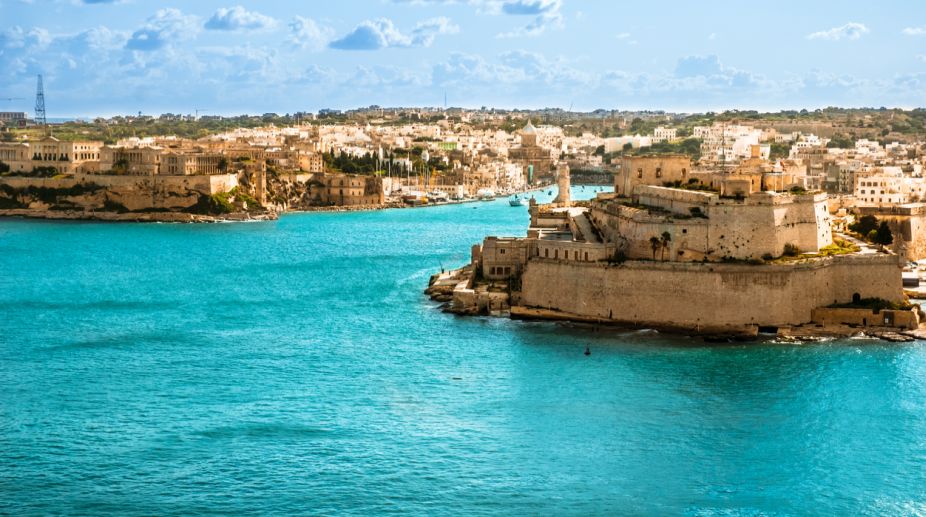Malta to offer free public transport from next year
The free transport scheme was one of many measures announced in the budget for 2022 containing a raft of social measures aimed at cushioning the effect of the rising cost of living.

Grand Harbour, Valetta, Malta (Photo: Getty Images)
In an effort to highlight places of interest in countries across the world, their varied culture, economy and history, The Statesman brings to you a Weekly Focus on countries with which India shares diplomatic ties and friendship. This week’s focus is on Malta. Know all about the country.
Capital: Valletta, Currency: Euro, Language: Maltese (official) 90.1 per cent, English (official) 6, multilingual 3, other 0.9 (2005 EST.) Religion: Roman Catholic (official) more than 90 per cent (2006 EST.), Ethnic groups: The Maltese are descendants of ancient Carthaginians and Phoenicians with strong elements of Italian and other Mediterranean stock.
Food and festivities: The cuisine borrows heavily from neighbouring Sicily and North Africa. Although food from every part of the globe is to be found on the island, local restaurants providing rustic homecooked family recipes are denitely worth seeking out.
Advertisement
Among secular celebrations you can join in are the pre-Lenten Carnival, Independence Day (21 September), Republic Day (13 December), and the Spring Show of Flowers, Vegetables, and Fruits at San Anton Gardens that dates back to the 17th century
Tiny Indian Presence: Even though some Maltese-Indians trace their roots in Malta to 1890s, the Indian community has remained small and is no more than 400 strong about of 110 of them having Maltese nationality.
They are mostly engaged in business of textiles, and food industry. There are also some Indian students studying in Malta. No international airlines fly directly from India. Connecting flights are offered by Air India, Jet Airways, Emirates, Aeroflot, Turkish Airlines, British Airways, Lufthansa and Etihad Airways.
Indian Investments
Indian investments are raising bilateral trade between India and Malta stood at $351.5 million in 2015-16. India’s exports to Malta were of $325 m in 2015-16 whereas imports from Malta were to the tune of $26 m.
The main items of India’s exports to Malta are marine products, drugs, pharmaceutical & fine chemicals, inorganic/organic/agro chemicals, manufactures of metals, transport equipments etc.
The main items of India’s imports from Malta are pulp and waste paper, metal scraps, organic chemicals, medicinal & pharmaceutical products, electronic goods. Indian pharmaceutical company Aurobindo Pharma, which established its first European GMP certified facility in Malta in 2008, launched its products in the Maltese market in October 2010 and has since further expanded its operations and acquisitions.
OVL sent a team to explore opportunities in hydrocarbon sector. Indian company I-flex, computerised the operations of Malta’s Central Bank. Areas of mutual interest are financial services, manufacturing, education, shipping, tourism and information and communication technology.
Sights worth seeing
Valletta: The entire city of Valletta is testimony to the grandeur of the Knights of Malta. Small city is bounded by two harbours, the Grand Harbor and Marsamxett Harbor. Highlights of the city are Saint John’s Co-Cathedral, Grand Master’s Palace (once the residence of the Knights of Malta), Upper Barracca Gardens and the Museum of Archaeology.
Gozo: With its quaint pastoral landscape, quiet towns, and pristine beaches, this little island is the perfect place to enjoy a relaxing vacation while still discovering cultural attractions. Gozo is also famous for the Azure Window, a striking coastal formation. Most of the island is gently rolling hills covered with a patchwork of small farms, and the hillsides lead down to protected beaches and old fishing villages. A favorite beach is at Ramla Bay.
Tarxien Temples: Excavated in 1914, the site covers an area of 5,400 sq m and displays the artistic achievements of Malta’s mysterious prehistoric culture during the “Temple Period” (late Neolithic period) between 3600 BC and 2500 BC.
(Compiled by Kunal Jain)
Advertisement